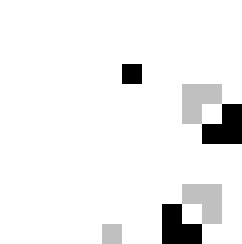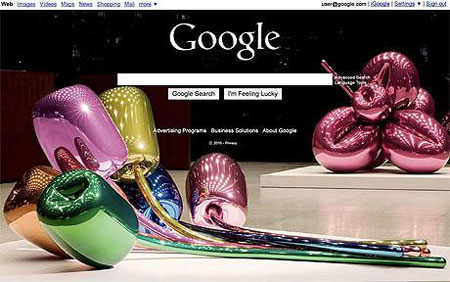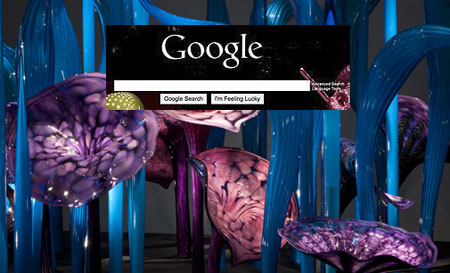From my dump.fm page:
Painted Kirk thinks of Photographic Kirk
Roddenberry Kirk thinks of JJ Abrams Kirk
thought balloon via noisia
Non-Trekker bonus: What is a blog?
From my dump.fm page:
Painted Kirk thinks of Photographic Kirk
Roddenberry Kirk thinks of JJ Abrams Kirk
thought balloon via noisia
Non-Trekker bonus: What is a blog?
Not particularly recommended: Ben Davis' 9.5 Theses on Art and Class. Humorless warmed-over Marxism written for some artists who were mad about Jeff Koons' "Skin Fruit" exhibition at the New Museum. Just don't go to the damned show!
But the Davis is worth skimming to appreciate Greg Afinogenov's Materialism and Art-criticism: A Response to Ben Davis’ “9.5 Theses on Art and Class”. It's witty and world weary.
“Art” itself, in Davis’s argument, becomes such a mystified idea. On the one hand, it is presented as a “basic and general” impulse which permeates all social structures and creative activities. Its nature, however, soon subtly changes: it acquires a kind of quantitative aspect which it then becomes the goal of political action to increase. The operation is done without argument, which conceals all the attendant problems: surely art is not realized better or worse in different societies? Where would one get the yardstick through which to measure it? How is the goal of the “maximum flourishing of human artistic potential” to be weighed against other possible goals, such as peace or economic equality, without facile utopianism? A vision of the artistic world that fails to offer any more concrete definitions of its central term is equivalent in every way to the flabby “ideals” ridiculed by Marx and Engels in the nineteenth century. Its supposed political aspect, realized through the connection to the “working class” and to various “radical impulses,” is defined entirely a priori and, apparently, largely unconsciously; thus, Davis writes that the contradiction between the two middle-class definitions of art occurs “at every moment where what an artist wants to express comes into contradiction with the demands of making a living; in a situation where a minority dominates most of society’s resources, this is often.” The latent (and patently false assumption) that true art must always be politicized in a leftist direction is neither defended nor discussed.
Only in Davis’s concrete proposals, which are largely consigned to thesis 8, do we see the real impact of these essentialized concepts. For despite all the loud talk of the ruling class, of ideology and critique, of politics and revolt, Davis’s “Theses” finally have nothing more to offer than a few half-hearted tugs at the teat of the State. Government funding for the arts, art education, money for research projects: all this would—and did—warm the heart of any nineteenth-century European liberal, sweating into his starched cravat about the threat of the socialist masses. What could be better for institutionalization, cooptation, and control than barrels of cash dispensed in the name of abstract ideals? When at last Davis’s abstractions fail him, and he is unable after all to find in the “working class” a viable countervailing force against “ruling-class ideology,” the government is always there as a potential source of solutions. The gesture, of course, makes nonsense of the “critical” standpoint—and it would be difficult even for Hegel to see government art funding as a stop on the road to “changing the material basis of society.” His politics were a bit more direct.
This is right on the money, no pun intended, and in response Davis mostly hyperventilates.
The problem with both essayists: they don't argue from art but rather drag their political brawls into the art arena, where, as usual, artists watch the punching and counterpunching and exclaim "those guys are some kinda smart!" Davis invokes the "Skin Fruit" protestors as the raison d'etre of his theses, but at least one of those two artists makes "art about the art world," which is a lesser-to-the-point-of-nugatory, snake-eating-its-tail kind of pursuit. Would love to read some analysis of contemporary artwork that teases out political assumptions while respecting how it works as art, and a comprehensive theory based on such analyses. So tired of Marxist and post-Marxist intellectuals treating art as a tabula rasa for their sociological and historiographical debates. Even Boris Groys, who does a much better job than Davis of thinking outside the "small contingent producing baubles for the rich" box (by even-handedly considering kitsch--web art, Howard!--and art made by totalitarian societies), prefers the view from 30,000 feet.

Am in a show in Poland organized by Marcin Ramocki called "Made in Internet" (as part of ARTBOOM, an annual urban and public space festival in Krakow).
The artist list (links are to artist pages in Polish w/ embedded YouTubes):
0100101110101101.ORG
Banovich, Tamas
Bell-Smith, Michael
Cortright, Petra
Davis, Paul B.
Endlicher, Ursula
Eteam (Lamprecht Franziska and Moderegger Hajoe)
Holmberg, Joel
JODI
Lonergan Guthrie
Lucas, Kristin
McKay, Joe
Moody, Tom
MTAA
Murphy, Luke
Olson, Marisa
Slocum, Paul
Stead, Jessie
Van Den Dorpel, Harm
Yeh, Cj
Ramocki, Marcin
My contribution is an enlarged version of the above GIF - retitled "Rotating Smile with Frame Removed" - that loops continuously for a minute. ("Militant, pointless redundancy..." Omigod magazine)
"Made In Internet" is described as follows:
...a showcase of short video forms created by web artists. This selection reflects the trends and concepts of contemporary new media in the last 5 years, which revolve around blogs, streaming video and social media: the late, consumer-oriented Web 2.0. In this new artistic universe appropriation is taken for granted, the attention span is short and the reward often takes the form of a conceptual charade. The works in the show stem from the web: they either have been created from found internet material or produced specifically for that platform.
Ramocki is giving a talk, "Assumed Mobility: Thoughts on Experiencing Time Online," and the PDF outline is here.

A few days ago Google ran a full-bleed image of a Jeff Koons installation shot as one if its joky seasonal page styles. Or so it seemed--more likely it was to plug its new customizable home page but a few seconds' googling to confirm this is time too precious to waste. At any rate, immediate catcalls, hoo-hawing, and wtfs from the socialmediasphere possibly caused the image's rather sudden disappearance. Again, pure speculation and a more commercially responsible blogger would check. Mentioned it here but had not thought to save the image, assuming it would be up for the rest of the day rather than a few hours. Hat tip to John Transue for finding the above and posting it to dump.fm.
As noted in the earlier post, Koons is looking more and more like blown-glass artist Dale Chihuly these days. Chihuly is schlock thinking it's art as opposed to Koons' art thinking about schlock but what happens when you can barely tell the difference? Made this mock-up to show the comparison, and offer another possible search page "theme":

For the record, Koons did interesting work up to about the first flower puppy, a sculpture that was made in Germany in a year he was not included in Documenta as a kind of petulant, salon-des-how-dare-you-refuse-me gesture. His peak was probably the "banalities" show of the late '80s, when he hired italian woodcarver/polychromers to make large-scale sculptures of pure commercial kitsch (Michael Jackson with chimp, Pink Panther with babe, Popples-brand teddy bear with bird, etc). Since then he has been cranking out metallic balloon-animal sculptures as "plop art" (to be plopped into public plazas--get it?), which are passably compelling, as well as pseudo-Rosenquist collage paintings that are impossible to look at, and not in a good way.
Update: Have been told Google has Chihuly search page templates so I didn't have to make a crapp(ier) one. OK, duly noted.
Update 2: Jeez, did not say Google had "permanently taken down" the Koons - none of the seasonal crap lasts more than a day but it's usually up more than a few hours. Must everything be spelled out in a blog post? And why am I on twitter, please? (OK, many of the @s are great and informative - still feeling commenterphobic I guess. Should be more tolerant of argumentative ignorati.)
Update 3: Need to "work through" this blogger tantrum. The post above says: (i) the Koons page was taken down by Google more quickly than its usual Thanksgiving turkey-style joke page; (ii) many socialmediasphere commenters thought the page was crap; and (iii) i did no research to find out if the two were connected but assumed they were for purposes of getting in some gratuitous digs at all parties. Honestly, I don't really care about Google or its attempts to build buzz for its new roll-out. Am interested, however, in how the art world and tech world rub against each other (usually with bad results). Although I don't have comments turned on, people sought me out through other soc-med channels (dump.fm and twitter) to tell me that the Chihuly and the Koons pages were readily available if you want a crap search page (OK, they didn't say the last part.) One of the commenters had previously sung the praises to me, in Paddy Johnson's blog comments, of Google's "similar image" function, which I think is dorky. It's hard to know if everyone in the world is working for Sergey Brin (a la pod people in Invasion of the Body Snatchers) or if they just love him so darn much.